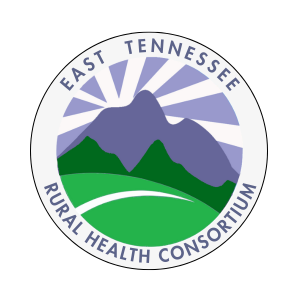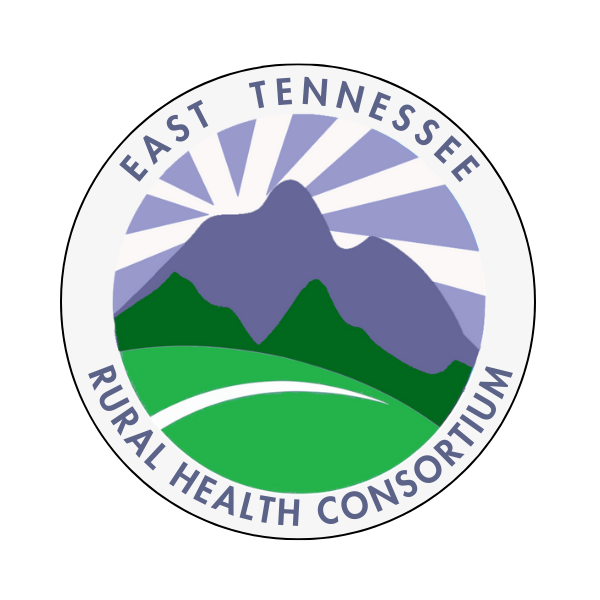RCORP-ETC and Project Hope are producing digital stories that showcase how community members have been affected by opioid use disorder in rural East Tennessee. Digital stories have the power to transform communities, as people learn about and understand others’ experiences. By viewing and distributing these stories, we can reduce the stigma surrounding opioid use disorder in East Tennessee.
If you have viewed or shared these videos in your efforts to combat the opioid crisis in East Tennessee, we would love to hear from you. Let us know how you are using these videos here.
Mallie’s Story
Mallie’s Story is that of a young mother misusing prescription painkillers. Due to addiction, Mallie lost custody of her first two children. After several years of living with a substance use disorder, Mallie turned herself in to the police and was offered a second chance at life by way of drug court and a halfway house. Mallie found new ways of coping and began her road to recovery. She regained custody of her children and is now happily married and works with women who are struggling with a substance use disorder.
Are you interested in using this digital story in training materials or programming? Click here for discussion questions to accompany Mallie’s story.
Dr. Stephen Loyd’s Story
Dr. Loyd’s Story is one of a young doctor living his dream when addiction entered his life. Feeling stressed from raising two young children and beginning a private practice, Dr. Loyd misused one pill that he had been prescribed by the dentist months earlier. That half of a hydrocodone changed his life. He began using on a regular basis until he came across a patient in the ICU that had overdosed on less medication than he was taking daily. This became the turning point in Dr. Loyd’s journey. He was admitted to an inpatient treatment facility, which was instrumental to his recovery.
Are you interested in using this digital story in training materials or programming? Click here for discussion questions to accompany Dr. Loyd’s story.
Alesha’s Story
Alesha’s Story follows the journey of a young woman whose drug use led her to flee from arrest for nearly two years. Alesha sold drugs on the street until one morning in 2005, Alesha was awakened by a SWAT team outside of her home because she had sold drugs to an FBI informant. Despite this experience, Alesha has created a new life and now serves as a peer recovery specialist for others who are in recovery.
Are you interested in using this digital story in training materials or programming? Click here for discussion questions to accompany Alesha’s story.
Ron’s Story
Ron’s Story follows the journey of a man who began using drugs at the age of 15 to cope with the side effects of the traumatic, aversive childhood experiences (ACES) he endured as a child. The murdering of his parents, coupled with the neglect he experienced during childhood, led him to drug addiction but his path to recovery is lit by his passion for advocacy.
Are you interested in using this digital story in training materials or programming? Click here for discussion questions to accompany Ron’s story.
Amy’s Story
Amy’s Story explains her experience with opioid use disorder following the death of her husband. There were limited resources in her rural East Tennessee county for people struggling with addiction and Amy felt stigmatized for opioid use. Over the course of 10 years, Amy seemed to try everything to stop taking drugs but her efforts did not lead to long-term recovery. She eventually moved to Knoxville as a last resort and entered a halfway house. This resource finally allowed her to learn new ways of coping and reenvision her life without drugs.
Are you interested in using this digital story in training materials or programming? Click here for discussion questions to accompany Amy’s story.
Sue’s Story
Sue’s Story follows the journey of a young woman from Campbell County whose exposure to oxycontin at the age of 18 sparked an 18-year-long drug addiction. After multiple overdoses, several trips to the hospital, and an arrest, Sue was extended an opportunity to participate in a pilot diversion program, which provided her needed services as an alternative to criminal chargers. This program was instrumental in facilitating her recovery. Today, Sue serves as a peer recovery specialist and has created a brand new life.
Are you interested in using this digital story in training materials or programming? Click here for discussion questions to accompany Sue’s story.
Ashlyn’s Story
Ashlyn’s story details the tragic loss of her older brother, Kirk, who at the age of 26, passed away as a result of an opioid overdose. In this heart-wrenching narrative, Ashlyn reflects upon the call she received from her father who shared the news of her brother’s passing and describes the lasting effects Kirk’s passing has had on their family and close friends. Beyond describing the devastating nature of Kirk’s passing, Ashlyn reflects on Kirk’s influence as a friend, a son, a brother, a student, and above all, his influence as a human. She speaks to his strength and courage, and his desire to be in recovery. Although Kirk’s untimely passing occurred before he could achieve recovery, Ashlyn continues to keep Kirk’s legacy alive through advocacy and by leading with compassion and love in order to reduce stigma surrounding substance use.
Are you interested in using this digital story in training materials or programming? Click here for discussion questions to accompany Ashlyn’s story.
Rachel’s Story
Rachel’s story follows a social worker whose first introduction to opioids was with medications prescribed to her after dental surgery. Once substance misuse became the central focus of her life, Rachel lost her livelihood as a social worker, as well as her home, her cars, and her freedom as she went to jail five times. In 2015, Rachel she was offered the opportunity to participate in an intensive outpatient treatment program instead of jail. Though she initially only chose the program to avoid jail-time, Rachel credits the program with saving her life. She has had her social work license reinstated and works as a recovery specialist.
Are you interested in using this digital story in training materials or programming? Click here for discussion questions to accompany Rachel’s story.
April’s Story
April is a young mother whose life was turned upside-down by opioid misuse and addiction. April’s 7-year long battle with opioids began when she was looking for relief from back pain after giving birth. She eventually lost custody of her two sons. April conveys that once she lost her children, she no longer had any reason to even try to “be normal.” After going to jail, April was given probation with the stipulation that she get treatment for her substance use disorder. April tells us about the intensive outpatient treatment program for mothers that provided her with the coping skills, resources, and friendships necessary to enter recovery successfully and ultimately help her regain custody of her children.
Are you interested in using this digital story in training materials or programming? Click here for discussion questions to accompany April’s story.
Jessica’s Story
Jessica’s story follows a young woman who survived nine years of opioid misuse. During that time, she had three overdoses. The last one was at a gas station where a firefighter used an opioid-reversal medication called naloxone (brand name, Narcan) to save her. Jessica relates that even though she continued to use after that day, there was a “spark” ignited that eventually led her to seek recovery. Jessica now educates others on harm reduction strategies, such as teaching lay persons to administer naloxone in the community if they suspect someone has overdosed. Jessica has been in recovery since 2016.
Are you interested in using this digital story in training materials or programming? Click here for discussion questions to accompany Jessica’s story.
Susan’s Story
In this story, Susan shares the pain of losing a child to substance misuse and overdose. Susan paints a picture of her son, Logan, as bright, funny, loving, and kind. However, she also reveals the presence of mental illness that she did not understand at the time. At age 15, Logan began using substances as a way to “find solace from his demons”. Though he had successes in his life, he never fully dealt with his depression and substance misuse. Susan shares that, tragically, Logan died of an overdose before finding help. She poignantly relays her sadness and grief at the loss of her child. She also expresses that the stigma that surrounds substance misuse strips the person of their humanity. She wants us to understand that, even though her son struggled with these ailments, Logan was still a person who loved, laughed, and brought joy to those around him.
Are you interested in using this digital story in training materials or programming? Click here for discussion questions to accompany Susan’s story.
Marta’s Story
In this story, Marta shares her experiences related to creating a recovery congregation in Cocke County. Specifically, she describes how back in 2012 an increase in opioid deaths in her community motivated her church to take action against the opioid crisis. Her congregation began their efforts by learning more about the science of addiction and inviting guest speakers to share their first hand experiences with addiction. Her congregation also embarked on a series of book studies and site visits. After two years of preparation, her congregation decided to align themselves with Celebrate Recovery, which gave them access to established curriculum and programming. Watch this video to learn how to start a recovery congregation and the benefits of doing so for rural communities affected by the opioid epidemic.
The Grace House
This video offers a profile of The Grace House, a remarkable men’s recovery home in Athens, TN that runs on a budget of less than $30,000 per year. The Grace House is able to operate on a shoestring budget in large part because it enjoys significant community support. Community members and businesses cook meals, donate food, pay the utility bills, make repairs on the home, and much more. The recovery home also operates with limited staff and residents assume leadership positions as they progress in the program. The Grace House has been very successful in helping men become substance free, and many graduates go on to get jobs in the community. Watch this video to learn how rural communities with limited funding can help individuals find sobriety by capitalizing on community support and volunteers.

